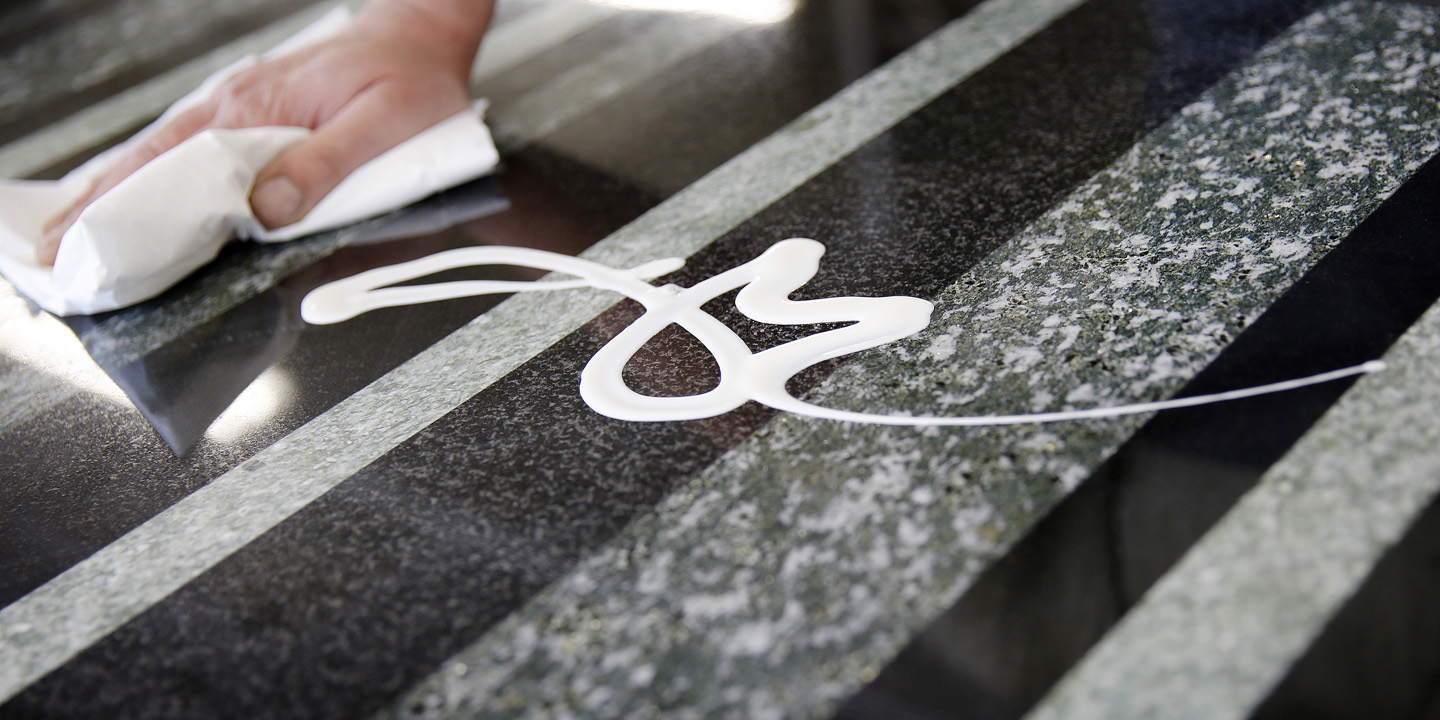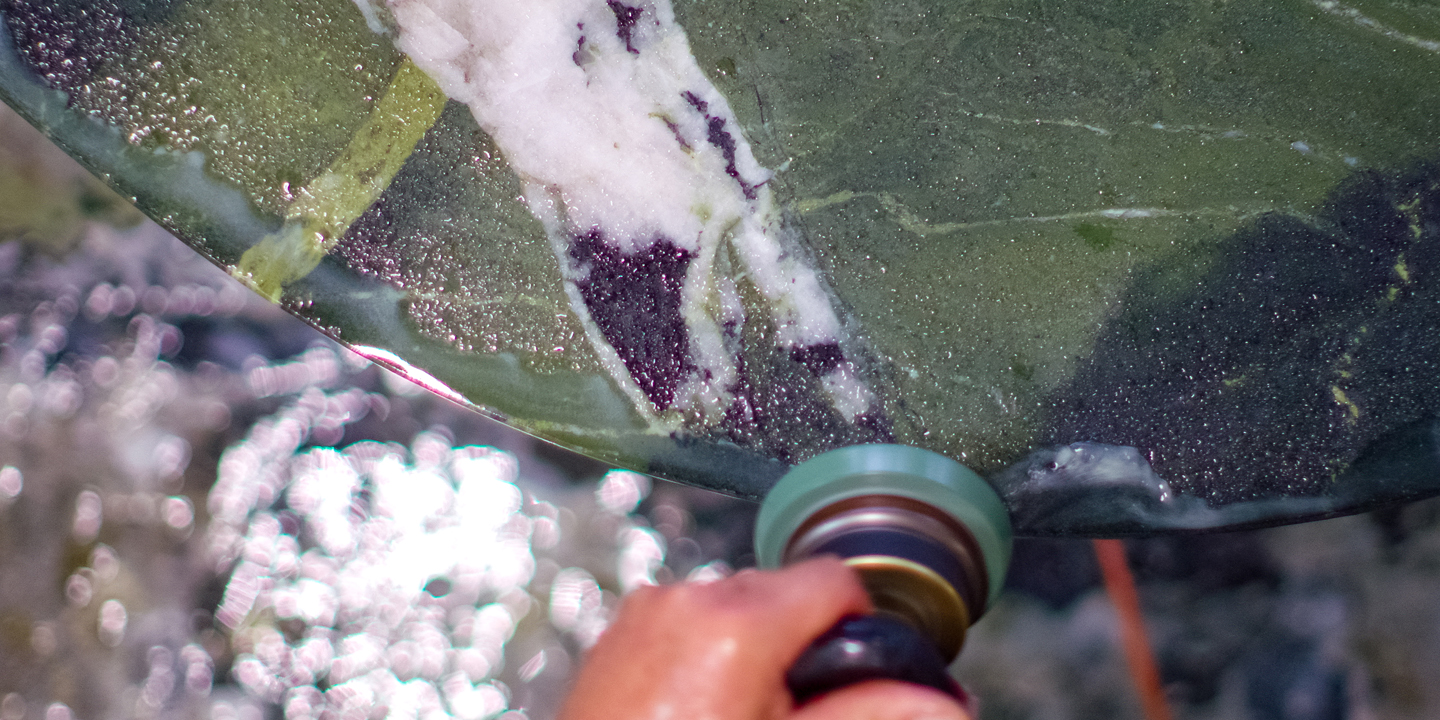FAQ
1. FAQ on Marble tables
What makes marble tables so special?
Marble tables offer a unique combination of natural beauty, durability and elegance. Each table is unique due to its individual grain, marbling and play of colors. This timeless quality gives every room a special atmosphere and ensures that marble tables have been a popular piece of furniture for centuries.
Are marble tables high maintenance?
For regular cleaning, wiping with a damp cloth is sufficient. The best stain protection is a quick reaction. The later you wipe, the more it can penetrate the stone. Regular aftercare with the DRAENERT stone impregnator should be carried out quarterly to half-yearly, depending on usage. The impregnator is suitable for polished, leathered and matt stone surfaces.
Does a marble table need to be sealed?
There is no sealing for natural stone as we know from a wooden or metal surface. Stone is too hard and paint cannot adhere consistently to this surface. In earlier times, coating with polyester was common, but with major disadvantages. Over time, polyester yellows and becomes brittle. The high-gloss DRAENERT natural stone surfaces are produced exclusively through the finest polishing with corundum polishing disks and water.
What different stone surfaces are there?
- Polished surface:
It is considered the classic stone surface. We create a reflective, high-gloss surface through up to seven different grinding and polishing processes, using only water and corundum grinding wheels.
- Leather surface:
In order to preserve the visual and haptic originality of the stone, we offer the leather surface. It is created by processing with steel brushes and then smoothing with plastic brushes. By removing the softer minerals, the stone structures are carved out in relief. The stones that are particularly suitable for this are marked accordingly in our stone lists.
- Matte surface:
By omitting the final, finest sanding steps, we get a flat and matt surface, i.e. without shine. The brilliance and depth of color of the stones are somewhat muted.this surface. In earlier times, coating with polyester was common, but with major disadvantages. Over time, polyester yellows and becomes brittle. The high-gloss DRAENERT natural stone surfaces are produced exclusively through the finest polishing with corundum polishing disks and water
Can scratches on marble tables be repaired?
Knives and forks or unglazed edges of ceramic dishes can cause fine scratches in the polish. Placemats should always be used.
Are marble tables suitable for kitchens?
Yes, but you should be careful with acidic foods and take good care of the table.
How is marble different from granite?
We divide our stones according to their surface hardness:
Hard stones such as granite are completely insensitive and cannot be scratched by common household appliances. Soft stones such as marble are more sensitive to use and have a similar hardness to glass.
Can I put hot objects on a marble table?
It is advisable to use coasters to avoid heat damage
How much does a marble table cost?
There are various factors that influence the price of natural stone. Depending on where each type of stone is found, there are different costs for transporting it over land and sea until it reaches the major trading markets. The traditional center of natural stone processing for Europe is in Italy near Carrara and Verona. The type of extraction - be it in opencast mining, in large open quarries or underground in tunnels - also changes the price. Natural stone is most often used in architecture. Stone types that are particularly in demand lead to a shortage of supplies and thus to rising prices. The same applies here: the larger the range of a type of stone, the lower the price. Smaller stone deposits and rarities with a special color and unique pattern are sought after worldwide and are therefore more expensive. The price for the approximately 50 standard stones in our natural stone range can be guaranteed for a period of one year. These are differentiated into price groups from 2 to 6.
How heavy is a marble table?
The weight of a marble table can vary greatly depending on the size, thickness and type of marble used. As a rule, marble tables are relatively heavy due to the density and weight of the marble. A small marble table can weigh a few dozen kilograms, while larger dining tables or conference tables can weigh several hundred kilograms. It is important to note that the weight of a marble table can also be influenced by additional elements such as table frames or reinforcements.
Can I buy a used marble table?
It can make sense to buy a new marble table for several reasons:
When purchasing a new marble table from a trusted dealer or expert, you can be sure that you are purchasing a high quality product that meets applicable standards. You will receive professional advice that will allow you to choose the perfect table for your needs and be confident in the authenticity of the marble. The dealer will also assist you with transporting and assembling the heavy table to ensure that it is placed safely and professionally. Additionally, reputable dealers offer comprehensive care and repair support, including instructions on proper care and help treating scratches or stains.
Marble table or wooden table – which is better?
Compared to the traditional furniture material wood, natural stone has many advantages:
Higher degree of hardness: Natural stone is significantly harder than solid wood and can therefore hardly be scratched or get pressure points. Natural variety of colors: The range of colors in natural stones is almost limitless and extends across the entire color spectrum, without any artificial coloring. In contrast to solid wood, this variety offers the interior designer great freedom of design. No color change: The color of the stone slab remains permanently unchanged. UV radiation does not darken or fade like solid wood. This is a particular advantage with extendable dining tables, as the additional table top is usually stored in the shade. Hardly any exposure to heat or cold: neither a hot pot nor a bottle from the freezer is a problem for natural stone. There is no need to worry about the surface burning (as with wood) or the plate shattering (as with glass). No swelling or shrinking: Natural stone absorbs liquids, but does not change its shape or size. Post-drying or warping is not possible here. This is especially true in extreme locations with underfloor heating or in the winter garden with direct sunlight. Natural stone tables are absolutely dimensionally stable.

